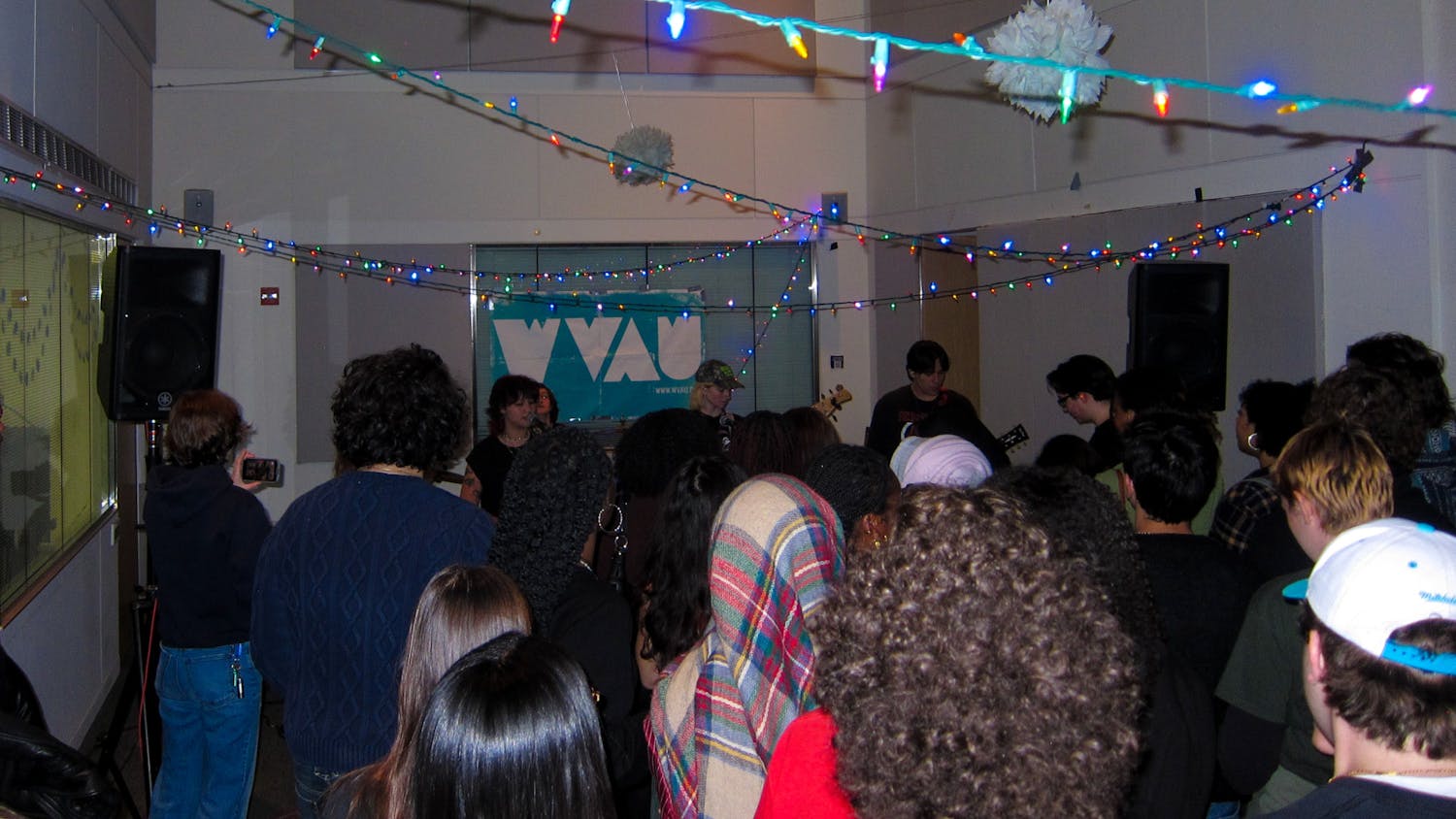The U.S. Army Corps of Engineers will temporarily stop excavating AU's Lot 18 this Friday until further notice due to depleted funds, according to Todd Sedmak, associate director of AU Media Relations.
The Army Corps has been working in the Lot 18 debris field, encompassing the Financial Aid and Public Safety buildings on the South Side of campus, since they found a sealed container of lewisite, a chemical warfare agent, last June. Lot 18 is part of the larger AU area where the army tested weapons in World War I.
Currently, the Lot 18 project is an area of dispute for AU, the Army Corps and some residents of Spring Valley, the 661-acre area that includes AU.
AU worked to get the Army Corps $10 million dollars in their budget from Congress to clean Lot 18 more quickly and efficiently, Sedmak said. Congress urged the Army Corps to complete work by December 2005 to protect people at the University and local residents, the Northwest Current, a local weekly newspaper, reported Dec. 29. However, Gary Schilling, Army Corps of Engineers project manager for Spring Valley, said Congress allotted only $2.5 million for the project.
"The budget is split annually between arsenic and ordinance removal," Schilling said.
However, Sedmak disagreed.
"The Army Corps doesn't deny that they have the extra $10 million in their budget, but they refuse to say where it is from," he said. "The question is how are they spending their additional $7.5 million?"
The Army allots $11 million per year for Spring Valley clean-up, which is classified as a Former Used Defense Site, or FUDS. FUDS nationwide have an annual budget of $250 million, Schilling reported.
The Army Corps of Engineers are allowed to spend so much each year, and Lot 18's allocation is finished, Schilling said. He previously told The Eagle that the Corps spent millions of dollars on safety measures for the site, including a redundant tent and ventilation system that would contain any chemical leaks. The Army Corps is currently involved in discussions to redesign for the program.
"We have several different options to make sure the program will be completed by December of 2005," Schilling said. "We will likely stop work on Lot 18 in order to more efficiently design a program to complete work on the project."
Last summer excess groundwater made sift for weapons-testing debris difficult, the Corps previously told The Eagle. Also, the Army Corps previously halted Lot 18 work on Aug. 25, 2004 after the Corps used up all of the funds allotted for the project for that fiscal year.
Meanwhile, some of AU's neighbors say the funding should go not just toward Lot 18, but to the entire affected community since AU permitted the Army to test in the area during World War I, the Current reported.
However, residents need to remember is that the sooner Lot 18 is cleaned up, the sooner Spring Valley will be cleaned, Sedmak said.
"I encourage people to just do the math ... from a safety standpoint, many people are impacted, not just AU but the entire community."
The stop and start process, as well as budget problems, prohibited Lot 18 from being cleaned-up in a quick and efficient manner, which thus affected the entire Spring Valley community, Sedmak said.
The Spring Valley excavation site was known as the AU Experiment Station. Research and testing of chemical weapons occurred at the site during World War I. At the time, the Spring Valley area included several family-owned farms and AU's campus, Sedmak said. The chemicals affected AU and more than 1,500 homes in the Spring Valley area, according to the project Web site, www.nab.usace.army.mil/projects. More than 190 people in the Spring Valley area have ailments that may be related to the Army weapons testing, the Current reported.
The most recent updates involving Lot 18 excavation occurred on Dec. 17 when the Army Corps announced that they found a 4.5-inch sealed and intact bottle. It contained two breakdown products of the chemical agent mustard. The find was no danger to the AU community because of the safety procedures, according to an Army Corps of Engineers-issued statement.
The Army Corps is working with AU, the Environmental Protection Agency and the D.C. Department of Public Health, according to Schilling.
"We are a partnership with the regulation agencies and AU ... They have the opportunity to participate in the planning process and share duties with our organization," he said.
Excavations first began at AU after arsenic was discovered on campus in 2001, The Eagle previously reported. Soil in the intramural fields adjacent to the Watkins Arts building contained the chemical. Student athletes who played on the field noticed that blisters appeared on their bodies when it rained.
Arsenic levels were 498 parts per million in some soil patches; the highest legal amount is 43 ppm, an Army Corps test revealed. However, no one has had "adverse effects," Schilling said, though people, including AU workers, were tested by the Army Corps and D.C. Department of Health.
Once Lot 18 digs are complete, the Army Corps' work at AU will be nearly done. However, there is still a "grid" near Hughes Hall that contains low contamination, Schilling previously told The Eagle.
For more information on Lot 18 search The Eagle's archives.




